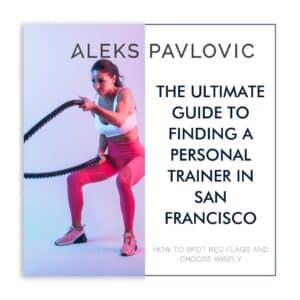What’s your race day goal? Do you want to achieve a personal record or see improvements in your endurance as you near the race’s end? Both experienced runners and first-timers can become stronger and more efficient by incorporating speed training workouts into their fitness routines.
So if your training plan consists of running the length of your race a few times a week, try these workouts to improve your speed.
What is Speed Training?
Speed training helps runners generate power and increase the speed of their movements by building functional strength, improving stride length and frequency, and reducing ground contact time. Speed training can involve running intervals or sprints of a shorter distance (like 200-400 meters) with a rest period between each. Strength and plyometric exercises that build strength and explosiveness in the lower body should also be incorporated into your speed training program.
Benefits of Speed Training
Whether you want to perform better in your adult soccer league, improve your marathon time, or just keep up with your toddler, speed training can help.
Here are a few of the benefits you’ll notice with consistent speed workouts:
• Improved running economy and biomechanics – Speed training can increase your running economy, which is how efficiently your body uses oxygen when running. This can result in improved biomechanics and less joint stress as you run.
• Enhanced muscular power – Speed training also helps to increase muscular power, which can help you run faster for longer periods and resist fatigue better.
• Improved neuromuscular coordination – Speed training can help better coordinate your muscles and movements for a faster, smoother run.
• Greater agility – Speed training can also help increase agility and make it easier to quickly change direction while running.
Types of Speed Training

There are three main types of running programs for speed:
- Assisted
- Resisted
- Regular
Assisted speed training helps you achieve a higher maximum speed than you’d typically be able to through downhill running, assisted towing, or running with a strong tailwind. Regular assisted speed training can lengthen your stride and improve your step rate.
Resisted speed training involves adding weight or resistance by wearing a weighted vest, using resistance bands, or towing a parachute. This type of training improves your leg strength so you can accelerate faster and run longer distances.
Regular speed training does not apply any outside resistance. Instead, you’ll try to cover a distance as quickly as possible without outside help. Regular speed training can include interval training or tempo runs.
Running Workouts for Speed
To improve your running speed, you should complete running workouts at least a couple of times per week. However, make sure to give your body time to rest and recover. Generally, you’ll want to avoid doing intense workouts on back-to-back days and give your body at least one day off per week.
Here are a few other things to keep in mind:
- First, warm up with dynamic stretches, brisk walking, gentle jogging, or cycling.
- Listen to your body. Discomfort is okay, but pain is not.
- Stay hydrated and eat nutrient-rich food before and after your workouts
- Remember to cool down.
Fartleks
Fartlek means “speed play,” so have fun with this one. The goal is to randomly vary your speed and intensity throughout your workout. For example, if you run outside, maybe you’ll do a slow jog to the next mailbox and then sprint up the next hill.
You can also time yourself. For example, 2 minutes of a moderate run, followed by 1 minute of jogging, and then a 3-minute sprint. Fartleks are great for helping you engage different muscle fibers and improving endurance.
Interval Training
Interval training is a great way to build speed endurance and will feel similar to a HIIT cardio workout. There are a few different ways to do interval training, but here’s one of my favorites:
- Run 50 meters; walk or jog 50 meters to recover.
- Run 100 meters; walk or jog for 50.
- Run 150 meters; walk or jog for 50.
- Add 50 meters to your running distance each time until you hit 250, then work your way back down until you’re running for 50 meters again.
- Repeat 1-2 more times, depending on your fitness level.
Tempo Runs
Tempo runs are long, steady runs at a moderate pace. Tempo runs are great for increasing your overall endurance and helping you run faster for longer periods.
To do a tempo run, set an appropriate distance that works for you—it can be anything from 1-4 miles. Then pick a comfortable pace slightly slower than your race pace. Aim for a pace that requires effort but allows you to speak a word or two at a time while running.
Focus on your breathing and settle into a rhythm with each step. As you become more comfortable running, you can increase the pace slightly to challenge yourself.
Hill Sprints
Hill sprints are a great way to improve your speed and power. You can do hill sprints anywhere with just a steep hill or staircase.
To do hill sprints, warm up with dynamic stretches and jogging. Then find a long, steep hill or staircase nearby. Start at the bottom of the hill and sprint up as fast as possible, focusing on good form. Then walk back down for your recovery period.
Repeat this process 8-12 times without stopping to rest at the top of the hill.
Agility and Plyometric Exercises for Speed

Agility and plyometric exercises are both great for improving your speed. Agility drills can help you develop better coordination, balance, and control, while plyometric exercises will make your muscles more powerful.
A 2013 study of 80 male college students showed that adding vertical and plyometric movements to their fitness routines improved overall speed on a 45-meter sprint by several percentage points. So here are a few agility and plyometric exercises to incorporate into your next workout:
- Standing long jumps
- Box jumps
- High knees
- Lateral skater jumps
- Ladder drills
- Tire runs
Strength Training for Speed
Strength training helps your muscles contract more forcefully, giving you more power when running and making you faster. Focus on building strength in your glutes, quads, and hamstrings, but upper-body and full-body movements can still help with overall endurance.
Try these moves in your next training session:
- Clamshells
- Glute brides
- Lunges
- Squats
- Deadlifts
- Burpees
Need Help with Speed Training?
Whether you’re a novice runner or an elite athlete, speed training can help you get faster and reach your goals. But if you’re tired of the same stale workouts or aren’t seeing improvements in your performance, contact me today. AP Wellness Training & Consulting offers science-based personal training in San Francisco or online to help you meet your athletic goals.






